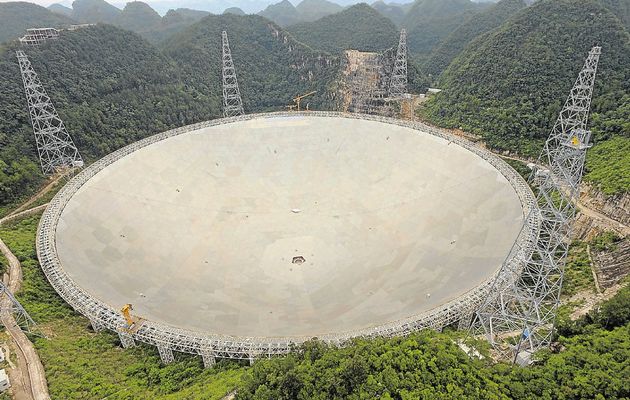The search for extraterrestrial life in space has just being heightened with the completion of the world’s largest telescope by China.
China fitted the final of 4450 panels into the centre of the 500m-wide Aperture Spherical Telescope, or FAST, over the weekend. The telescope, which cost $180- million and took five years to build, will be switched on from September.
“The project has the potential to search for more strange objects to better understand the origin of the universe and boost the global hunt for extraterrestrial life,” Zheng Xiaonian, deputy head of the National Astronomical Observation under the Chinese Academy Sciences, which built the telescope, told Xinhua news agency.
Around the size of 30 football pitches, the radio telescope is significantly larger than the current record holder, Puerto Rico’s 300m-wide Arecibo Observatory. It is also 10 times more sensitive than Germany’s 100m-wide steerable telescope, according to Xinhua.
From September the telescope will undergo trials and adjustments. Before then 9000 people who live within a 5km radius of the centre will be relocated to ensure radio silence in the area.
The telescope will be made available to researchers across the world and will help to detect pulsars and gravitational waves. FAST is expected to eventually be able to detect amino acids, the building blocks of proteins, which would signal life on other planets.
Researchers as far as 2000km away from the site in Pintang county, Guizhou, can use the telescope for observation and control. President Xi Jingping is determined to establish China as a space power. Its ambitions include putting a man on the moon by 2036 and building a space station, the first module of which will be launched in 2018.
The country recently unveiled the world’s most powerful supercomputer. It is almost three times as powerful as its nearest competitor. The race for the search for Alien just got notched up.




